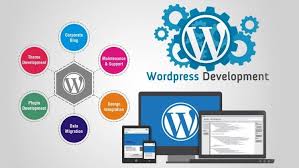Word Press Development with Shopify: Why I Chose a Different Path
Word Press Development was where I started my digital journey. I built my first blog using WordPress, then experimented with plugins, themes, and custom code. It taught me the core of web development but as I stepped deeper into eCommerce, I realized something. Sometimes, WordPress isn’t the most efficient tool for the job. That’s when I started exploring Shopify and it completely changed how I deliver client projects.
My WordPress Beginning and the Search for Simplicity
Word Press Development gave me a sense of creative freedom.
I loved the challenge of solving layout issues and editing PHP files late into the night.
But as projects grew more complex, so did the responsibilities.
Site speed, plugin conflicts, and security maintenance began eating into my time.
I needed a solution that was leaner especially for clients who wanted an online store without the technical overhead.
That’s when Shopify entered the scene.
Why I Use Shopify for Storefronts
With Shopify, everything just worked.
From day one, I could build product pages, design the storefront, and test payments all without touching the server or worrying about hosting.
Coming from a Word Press Development mindset, this was a refreshing change.
Shopify removed many of the hurdles that Word Press required me to jump over.
It gave my clients a clean, reliable platform. And it gave me back my time.
Shopify vs. WordPress: What I Learned as a Developer
I’ve built websites on both platforms. Each has its strengths.
Here’s how I compare them based on personal experience:
Design Freedom
WordPress wins here. If you’re comfortable with code, you can mold it into anything.
Shopify offers structure but you can still make deep changes using Liquid and theme settings.
Performance
Shopify is lightning-fast out of the box. No caching plugins needed.
In Word Press Development, performance depends on your theme, hosting, and plugins.
I’ve spent hours optimizing Word Press sites. Shopify just does it for me.
Security and Updates
Shopify handles everything. I don’t worry about updates or hackers.
With WordPress, I had to stay alert especially with WooCommerce installs.
Cost Over Time
WordPress starts cheap, but hidden costs creep in (plugins, hosting, dev time).
Shopify has a monthly fee, but it’s predictable and includes hosting, SSL, and support.
Using WordPress Skills on Shopify Projects
My background in Word Press Development helps more than you might think.
I understand layouts, how to structure content, and how SEO works.
So when I’m editing Shopify Development themes or building custom sections, I bring all that knowledge with me.
Here’s how:
- I use Liquid like I used PHP in WordPress.
- I structure content for SEO using proper heading hierarchy.
- I optimize site speed just like I did with caching tools before.
Shopify may be simpler but to do it well, strategy still matters.
Themes That I Trust on Shopify
Not every Shopify theme is worth using.
I’ve tested dozens, and only a few make the cut.
Dawn
The official default theme. Clean, flexible, fast. Perfect for starting a new store.
Impulse
If you need something sleek with advanced filtering and bold visuals, this one delivers.
Prestige
Ideal for high-end brands. Tons of polish, and still customizable.
I always test themes on mobile first. That’s where most customers shop today.
Mistakes I Avoid Thanks to My WordPress Experience
WordPress taught me to think critically about site structure and performance.
That mindset helped me avoid mistakes early on in Shopify projects.
Here are common traps I steer clear of:
- Overusing third-party apps that slow down the site
- Ignoring mobile optimization
- Forgetting to set up structured data for SEO
- Using inconsistent image sizes or quality
- Neglecting site speed because “Shopify handles it” (spoiler: you still need to optimize)
In web development, attention to detail is everything.
How RSF Soft Helped Me Scale My Workload
While I handle most of my projects solo, sometimes I collaborate with Rsf Soft.
They step in when I need more advanced development support like integrations, custom app builds, or multi-language stores.
Working with RSF Soft lets me scale without losing quality.
They know my workflow and build on it not against it.
Tools That Make Shopify Development Easier
Over time, I’ve built a toolkit that keeps things smooth and efficient.
These are my go-to tools:
- Figma for prototyping and layout
- Shopify Theme Kit for local dev work
- Canva for visuals and banners
- Google Search Console for SEO tracking
- Loom for sending clients walkthrough videos
Whether I’m working in Word Press Development or Shopify, these tools help me deliver polished, fast websites every time.
Should You Use Shopify or WordPress? My Honest Advice
Ask yourself what your site needs to do.
If your main goal is selling, Shopify is a no-brainer.
If you want a hybrid content plus products Word Press may offer more flexibility.
But don’t let the platform choice stop your progress.
What matters most is building something that works, looks good, and converts.
And both platforms can do that if you use them right.
FAQs
Q1: Can I migrate my WordPress site to Shopify?
Yes. There are tools and services to help with migration, but expect some manual setup—especially for design and SEO.
Q2: Is WordPress better than Shopify for SEO?
Not necessarily. Both platforms support good SEO. WordPress gives more control, but Shopify is easier to manage.
Q3: Do I need a developer to use Shopify?
Not always. But if you want a unique design or special features, having a developer—especially one with Word Press Development experience helps.

